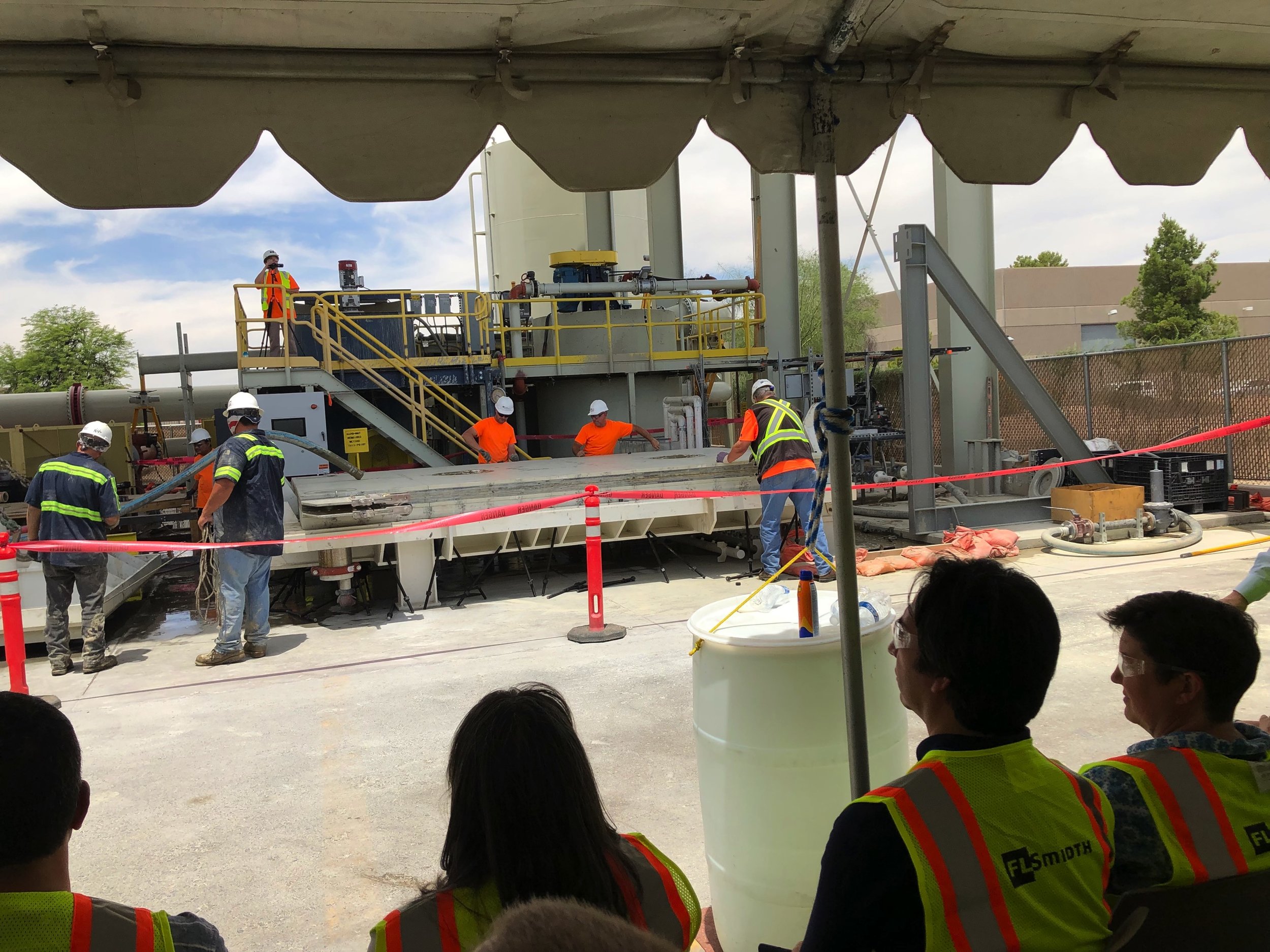Reflections on the Voice to Parliament Referendum
/This morning, I woke to the not unexpected news that the referendum on the Voice to Parliament had failed. I will hold back from expressing some of my views on the main political actors and their motivations, except to say, beware of opportunists who seek political advantage on social and justice issues as serious as this. I want to share some of my experiences with First Nations in Australia, because I’ve seen more than most and these motivate my commitment to reconciliation.
My understanding and interaction with Indigenous Australians relates mostly to my time in the outback.
I started my career in Mount Isa, which had major problems with alcoholism and homelessness in the Aboriginal community. There was one lady who was well known for urinating in public and shouting at people while carrying her flagon of McWilliams sherry. Yeah, it wasn’t nice, perhaps we need to think about the structural inequities that led her there. There was also Ian from Smelting Research, safety guru and still one of the best supervisors I’ve ever worked with. He helped save me from my inexperience more than once, when I was potentially putting myself in danger at the lead smelter.
In 1995, I did my one and only trip to Kakadu. We checked out the amazing rock art at Burrunggui. If I had my time again, I would go with an Aboriginal guide so that I could better capture the cultural meaning.
In 1997, me and my housemates took an epic drive from Mount Isa, through the red centre and on to Kalgoorlie, Bunbury, Perth then via the Pilbara, across the Kimberly and back to Isa. I was young and uninformed and climbed the sacred rock, Uluru, which I remain ashamed for to this day. It’s a reminder to me why we need to give more voice to the cultural wishes of First Nations. My ignorance was not an acceptable excuse. We stopped for petrol, I think it was at Kaltukatjara. There were padlocks on all the bowsers, as petrol sniffing was rife in outback communities. A tall, quiet, young Aboriginal man came out and looked at us. Our eyes met, no words were said. I wanted to say something empathetic. I didn’t know what. Weeks later, we traveled through Halls Creek. Things looked rough as hell there. When we stopped at Kalkarindji, the local fast food shop was overwhelmed with a crowd of Aboriginal kids trying to get fried food. A moment for me to reflect that food available in the territory at that time would not lead to good health outcomes. I left the settlement formerly known as Wave Hill with no idea about Vincent Lingiari, despite singing along to Paul Kelly’s song that trip.
In 1998, I took a drive from Mount Isa to Osborne Mine for an interview, stopping briefly at a shop in Dajarra for a snack. The white woman running the shop was saying something vicious to two Aboriginal kids there. I didn’t know the full context and I didn’t know what to say. However, I will never forget the disrespect that hung in the air, and how quickly I wanted to remove myself from that negative energy, because deep seated racism is truly oppressive when you see it.
Later when I got to Century Mine, I saw how extractive industries could work together to share economic benefits with Aboriginal communities and develop career paths for Indigenous Australians. The journey wasn’t always easy, like when the sit in occurred in 2002. I never got to meet Murrandoo, he was a bit of a controversial character, but his brother Bull and I got to talk quite a bit and I always felt we had mutual respect. For our Aboriginal workers, there were some big hurdles with literacy and numeracy and overcoming deep introversion. Some nights, before I had to leave for dinner in camp, Freddie, John, Tony and others would come and talk about their hopes, fears and aspirations. These were the most important times in my role as the manager of the plant. The highlight of my career was when I had to give a presentation in Normanton about how we would change operations at the mine site to allow more consistent delivery of water to the Aboriginal pastoral station at Moor Moor. The guy in charge made a joke before we got started about his spear that he had placed in the corner, and that he hoped he didn’t have to use it (on me). Luckily I had done my homework, we had a plan and I had worked hard to ensure that I could effectively listen to the concerns and communicate the technical and operational aspects that affected our ability to deliver water of acceptable quality to the station. They were very pleased and we delivered on our promises. That evening we drove down a dirt road to a remote community and had dinner together under the stars.
It’s been 15 years since I left Australia, and these days I feel a little more removed from First Nations issues there. However, Australia and its First Nations are in my heart and will never leave. Reconciliation is not dead, it lives in each one of us if we choose to let it.
For my Australian colleagues who voted no, I ask a few things of you. Firstly, if you have not read the Uluru Statement from the Heart, read it, I have included it below. Ask yourself, does this seem like an inherently fair statement? If not, please look at yourself in the mirror and ask if the issue is with the writers of the statement or with yourself. Secondly, given that you have decided that the Voice to Parliament is not the path forward, ask yourself what do you plan to do to advance reconciliation and address the severe inequalities in social outcomes that Indigenous Australians continue to face. If you’re devoid of ideas, I’d recommend a little education on our Australian history (yes it’s uncomfortable), listening to some music and trying to understand what the artists were saying (e.g. Midnight Oil, Yothu Yindi and Gurrumal to start). Watch the documentary on Adam Goodes and perhaps switch over to NITV sometime. Read about the Mabo decision. Find out how you can listen to more First Nations voices.
It is difficult to describe the pain I feel right now. I am not First Nations and I don’t pretend to know what it’s like to be Indigenous in Australia. But I’ve seen enough to know that what happened during this referendum wasn’t right, and many of those who championed a no vote don’t have the interests of First Nations at heart. While some First Nations people need a week of silence to reflect on what happened, I can’t be silent right now. To do so would be unconscionable. I invite you to engage with me in constructive conversation. Thanks for reading this.
ULURU STATEMENT FROM THE HEART
We, gathered at the 2017 National Constitutional Convention, coming from all points of the southern sky, make this statement from the heart:
Our Aboriginal and Torres Strait Islander tribes were the first sovereign Nations of the Australian continent and its adjacent islands, and possessed it under our own laws and customs. This our ancestors did, according to the reckoning of our culture, from the Creation, according to the common law from ‘time immemorial’, and according to science more than 60,000 years ago.
This sovereignty is a spiritual notion: the ancestral tie between the land, or ‘mother nature’, and the Aboriginal and Torres Strait Islander peoples who were born therefrom, remain attached thereto, and must one day return thither to be united with our ancestors. This link is the basis of the ownership of the soil, or better, of sovereignty. It has never been ceded or extinguished, and co-exists with the sovereignty of the Crown.
How could it be otherwise? That peoples possessed a land for sixty millennia and this sacred link disappears from world history in merely the last two hundred years?
With substantive constitutional change and structural reform, we believe this ancient sovereignty can shine through as a fuller expression of Australia’s nationhood.
Proportionally, we are the most incarcerated people on the planet. We are not an innately criminal people. Our children are aliened from their families at unprecedented rates. This cannot be because we have no love for them. And our youth languish in detention in obscene numbers. They should be our hope for the future.
These dimensions of our crisis tell plainly the structural nature of our problem. This is the torment of our powerlessness.
We seek constitutional reforms to empower our people and take a rightful place in our own country. When we have power over our destiny our children will flourish. They will walk in two worlds and their culture will be a gift to their country.
We call for the establishment of a First Nations Voice enshrined in the Constitution.
Makarrata is the culmination of our agenda: the coming together after a struggle. It captures our aspirations for a fair and truthful relationship with the people of Australia and a better future for our children based on justice and self-determination.
We seek a Makarrata Commission to supervise a process of agreement-making between governments and First Nations and truth-telling about our history.
In 1967 we were counted, in 2017 we seek to be heard. We leave base camp and start our trek across this vast country. We invite you to walk with us in a movement of the Australian people for a better future.






































